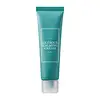What's inside
What's inside
 Key Ingredients
Key Ingredients

 Benefits
Benefits

 Concerns
Concerns

 Ingredients Side-by-side
Ingredients Side-by-side

Glycyrrhiza Uralensis Root Extract 58%
Skin ConditioningWater
Skin ConditioningPropanediol
SolventGlycerin
HumectantPhenyl Trimethicone
Skin ConditioningCaprylic/Capric Triglyceride
Masking1,2-Hexanediol
Skin ConditioningChlorella Vulgaris Extract
Skin ConditioningGlycyrrhiza Glabra Root Extract 0.05%
BleachingCynanchum Atratum Extract
Skin ConditioningAlthaea Rosea Flower Extract
Skin ConditioningPentylene Glycol
Skin ConditioningPanthenol
Skin ConditioningAmmonium Acryloyldimethyltaurate/Vp Copolymer
Hydroxyethyl Acrylate/Sodium Acryloyldimethyl Taurate Copolymer
Emulsion StabilisingVinyldimethicone
Dimethicone/Vinyl Dimethicone Crosspolymer
Skin ConditioningAcrylates/C10-30 Alkyl Acrylate Crosspolymer
Emulsion StabilisingGlucose
HumectantTromethamine
BufferingButylene Glycol
HumectantDimethiconol
EmollientDipotassium Glycyrrhizate
HumectantFructooligosaccharides
HumectantFructose
HumectantMicrocrystalline Cellulose
AbsorbentEthylhexylglycerin
Skin ConditioningGlyceryl Acrylate/Acrylic Acid Copolymer
HumectantHydrogenated Lecithin
EmulsifyingSorbitan Isostearate
EmulsifyingSodium Phytate
Cellulose Gum
Emulsion StabilisingSilica
AbrasiveCetearyl Olivate
Ceramide NP
Skin ConditioningSorbitan Olivate
EmulsifyingTocopherol
AntioxidantXanthan Gum
EmulsifyingGlycyrrhiza Uralensis Root Extract 58%, Water, Propanediol, Glycerin, Phenyl Trimethicone, Caprylic/Capric Triglyceride, 1,2-Hexanediol, Chlorella Vulgaris Extract, Glycyrrhiza Glabra Root Extract 0.05%, Cynanchum Atratum Extract, Althaea Rosea Flower Extract, Pentylene Glycol, Panthenol, Ammonium Acryloyldimethyltaurate/Vp Copolymer, Hydroxyethyl Acrylate/Sodium Acryloyldimethyl Taurate Copolymer, Vinyldimethicone, Dimethicone/Vinyl Dimethicone Crosspolymer, Acrylates/C10-30 Alkyl Acrylate Crosspolymer, Glucose, Tromethamine, Butylene Glycol, Dimethiconol, Dipotassium Glycyrrhizate, Fructooligosaccharides, Fructose, Microcrystalline Cellulose, Ethylhexylglycerin, Glyceryl Acrylate/Acrylic Acid Copolymer, Hydrogenated Lecithin, Sorbitan Isostearate, Sodium Phytate, Cellulose Gum, Silica, Cetearyl Olivate, Ceramide NP, Sorbitan Olivate, Tocopherol, Xanthan Gum
Snail Secretion Filtrate
Skin ConditioningCaprylic/Capric Triglyceride
Masking1,2-Hexanediol
Skin ConditioningCetearyl Alcohol
EmollientDimethicone
EmollientWater
Skin ConditioningCetearyl Olivate
Carbomer
Emulsion StabilisingArginine
MaskingBenzyl Glycol
SolventSorbitan Olivate
EmulsifyingOryza Sativa Bran Water
MaskingAllantoin
Skin ConditioningSodium Polyacrylate
AbsorbentEthylhexylglycerin
Skin ConditioningDisodium EDTA
Butylene Glycol
HumectantOryza Sativa Extract
AbsorbentRice Ferment Filtrate
Skin ConditioningPanthenol
Skin ConditioningEctoin
Skin ConditioningSodium Hyaluronate
HumectantSnail Secretion Filtrate, Caprylic/Capric Triglyceride, 1,2-Hexanediol, Cetearyl Alcohol, Dimethicone, Water, Cetearyl Olivate, Carbomer, Arginine, Benzyl Glycol, Sorbitan Olivate, Oryza Sativa Bran Water, Allantoin, Sodium Polyacrylate, Ethylhexylglycerin, Disodium EDTA, Butylene Glycol, Oryza Sativa Extract, Rice Ferment Filtrate, Panthenol, Ectoin, Sodium Hyaluronate
 Reviews
Reviews

Ingredients Explained
These ingredients are found in both products.
Ingredients higher up in an ingredient list are typically present in a larger amount.
1,2-Hexanediol is a synthetic liquid and another multi-functional powerhouse.
It is a:
- Humectant, drawing moisture into the skin
- Emollient, helping to soften skin
- Solvent, dispersing and stabilizing formulas
- Preservative booster, enhancing the antimicrobial activity of other preservatives
Butylene Glycol (or BG) is used within cosmetic products for a few different reasons:
Overall, Butylene Glycol is a safe and well-rounded ingredient that works well with other ingredients.
Though this ingredient works well with most skin types, some people with sensitive skin may experience a reaction such as allergic rashes, closed comedones, or itchiness.
Learn more about Butylene GlycolThis ingredient is an emollient, solvent, and texture enhancer. It is considered a skin-softener by helping the skin prevent moisture loss.
It helps thicken a product's formula and makes it easier to spread by dissolving clumping compounds.
Caprylic Triglyceride is made by combining glycerin with coconut oil, forming a clear liquid.
While there is an assumption Caprylic Triglyceride can clog pores due to it being derived from coconut oil, there is no research supporting this.
Learn more about Caprylic/Capric TriglycerideCetearyl Olivate is an emulsifier and texture enhancer. It is derived from the fatty acids of olive oil and Cetearyl alcohol, and is biodegradable.
As an emulsifier, it is used to prevent oils and waters from separating. It can also
Manufacturers use the name Olivem 1000. This ingredient has been found to preserve the natural microbiome of skin. Having a healthy microbiome helps keep our skin healthy and protects against harmful bacteria. This ingredient is grouped with Sorbitan Olivate under the name Olivem 1000.
Learn more about Cetearyl OlivateEthylhexylglycerin (we can't pronounce this either) is commonly used as a preservative and skin softener. It is derived from glyceryl.
You might see Ethylhexylglycerin often paired with other preservatives such as phenoxyethanol. Ethylhexylglycerin has been found to increase the effectiveness of these other preservatives.
Panthenol is a common ingredient that helps hydrate and soothe the skin. It is found naturally in our skin and hair.
There are two forms of panthenol: D and L.
D-panthenol is also known as dexpanthenol. Most cosmetics use dexpanthenol or a mixture of D and L-panthenol.
Panthenol is famous due to its ability to go deeper into the skin's layers. Using this ingredient has numerous pros (and no cons):
Like hyaluronic acid, panthenol is a humectant. Humectants are able to bind and hold large amounts of water to keep skin hydrated.
This ingredient works well for wound healing. It works by increasing tissue in the wound and helps close open wounds.
Once oxidized, panthenol converts to pantothenic acid. Panthothenic acid is found in all living cells.
This ingredient is also referred to as pro-vitamin B5.
Learn more about PanthenolSorbitan Olivate is created from the fatty acids in olive oil and sorbitol.
This ingredient is an oil in water emulsifier. It helps stabilize a product by preventing oils and waters from separating. Sorbitan Olivate also helps hydrate the skin.
Manufacturers sell sorbitan olivate under the name OliveM 1000. OliveM 1000 a multifunctional ingredient. It is self-emulsifying. According to a manufacturer, OliveM 1000 does not disrupt natural skin biome.
Due to its olive oil base, this ingredient may not be fungal-acne safe.
Learn more about Sorbitan OlivateWater. It's the most common cosmetic ingredient of all. You'll usually see it at the top of ingredient lists, meaning that it makes up the largest part of the product.
So why is it so popular? Water most often acts as a solvent - this means that it helps dissolve other ingredients into the formulation.
You'll also recognize water as that liquid we all need to stay alive. If you see this, drink a glass of water. Stay hydrated!
Learn more about Water